

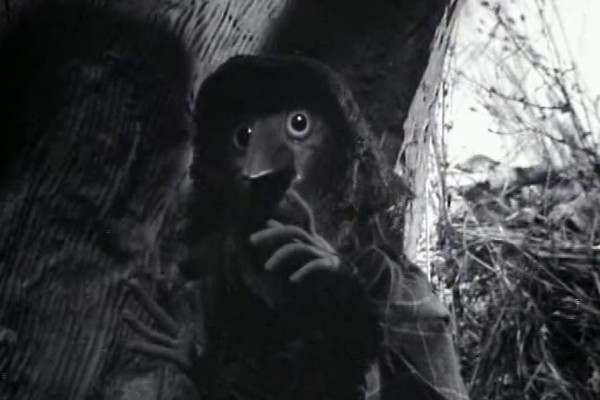
The series is available on DVD from Amazon. In the meantime, in order to celebrate the programme's 55th anniversary - and find out just why it was banned - please join me as I rank the series from worst to best...
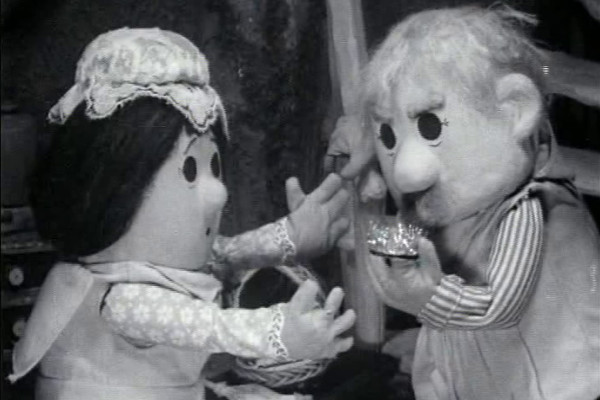
Pogle's Wood was something of a mainstay on UK television, two 13-part series about the daily lives of Mr. and Mrs. Pogle, their son Pippin, and his animal friend Tog. With the series running from 1966-1968, Pippin was so popular at the time that a weekly comic was named after him, and ran for several generations afterwards when he would have perhaps been long forgotten.
The word "perhaps" is a vital inclusion here, as the both series were repeated multiple times on the BBC up to the mid-70s, with one particular episode, Bears in the Wood, being shown no less than 17 times on the network. Each episode lasted 14-15 minutes, with the first series being more of a educational travelogue, the second more story-based, featuring slightly more continuity and acting as a precursor to Bagpuss in many elements.
Both series are fine, quite charming, although lack "pull" for a modern audience. As both series were amiable but not extraordinary (and were very much of a consistent quality across all 26 instalments) they won't be featured in a "Worst To Best" article on this site. What is featured here is the series that spawned it, a six-part serial from 1965 which went under the name "The Pogles" and was screened only once, then banned from television thereafter. Quite why it was banned will be answered in later entries.
In the meantime, this second episode features a baby Pippin with a silver crown that magically appears in the Pogles' Magic Plant. While this seems a substitute for a stork, the Pogles actually argue as to whether they can keep the baby, as it's not theirs. There's also an excursion to the local dairy farm. While the somewhat languid Pogle's Wood episode Milk from the Dairy featured an older Pippin being educated on the nature of milking, here Mr. Pogle nearly drowns after falling in a bucket of milk, and has to run empty-handed in case he's seen by humans. It was a very different show.
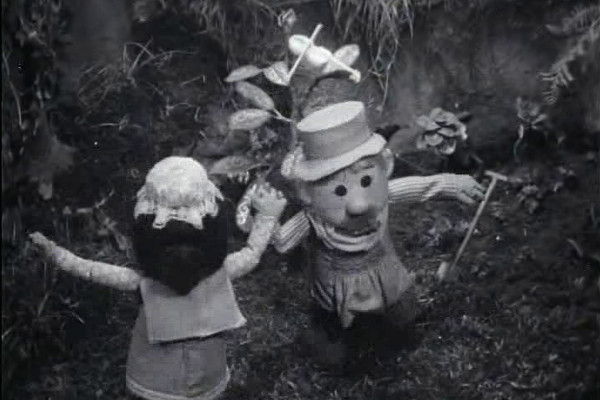
This opening episode sets the scene, with the lives of two small humanoid creatures - Pogles - that live in a wood. Articles on this site sometimes look at the differences in content between "then" and "now", not to judge said content, or to cast any kind of critical note upon them, but just merely as a discussion point to highlight how things have changed in the TV landscape.
This is perhaps never clearer than with the start of this one, which sees Mr. Pogle tip his wife out of bed to demand she makes his breakfast. The Equal Pay Act was still five years in the future, and the Sex Discrimination Act a decade away, so Mrs. Pogle has to put up with it. This said, later episodes do show Mr. Pogle as something as a blowhard with a soft, protective centre, even if his "I'll be respectable when I'm dead!" is an odd philosophy for a children's character aimed at the under-5s.
The core focus of this introductory episode is the existence of a Magic Plant, which can not only perform tricks, speak, and play the violin, but also has a penchant for drinking bilberry wine. This alcohol-based subplot was discarded in the first series of Pogle's Wood, although they brought it back for five episodes of the second run. But here, in "The Pogles", we regularly get a plant that can only survive if it necks entire bottles of wine... in a show for four-year-olds.
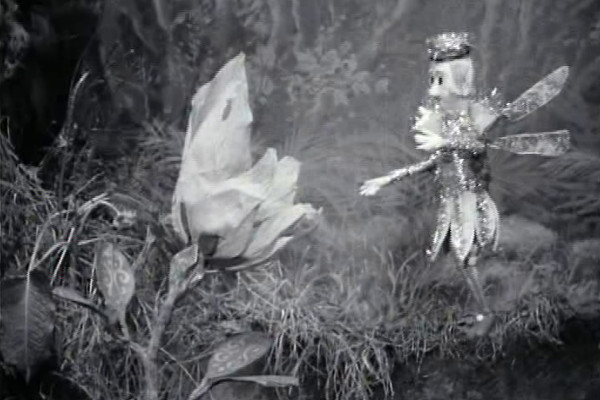
The core idea behind the Pogles was that the married couple were ordinary, and wanted nothing to do with magic. "But suppose," Oliver Postgate said in his autobiography, Seeing Things, "magic wanted to have something to do with them. How would small ordinary respectable people fare when faced with magic?"
The magic in the series included fairies, wishing flowers, and, most notably, a shape-changing witch. This last element in particular caused a rare example of editorial involvement in the work of Postgate and Firmin, as a BBC meeting was called with the Head of Family Programmes. In some ways a positive meeting, as a follow-up series of 13 episodes was offered, it was nevertheless explained that evil supernatural elements, including witches, were not welcomed. "I wasn't particularly surprised at this," confirmed Postgate in his autobiography, "in fact I rather felt the same."
So does this count as The Pogles being "banned"? Maybe not by the strict letter of the term, but the format and name of the series was changed by request of the buyer, and, while the least-screened episode of Pogle's Wood (Tree Farming) still managed to be broadcast on five separate occasions, The Pogles was a "one and done" deal.
The reason why this particular episode is ranked fairly lowly (though they're all pretty much on an even level of quality) is because the witch is disposed of less than halfway through the episode, making it somewhat anti-climactic, if not a blessed relief. (The solution of rendering her into "nothing", a total state of non-existence, is also in keeping with the slightly macabre nature of the series).
In her place comes the Fairy King, speaking with Postgate's send-up of Bertrand Russell's voice. Postgate had a pretty wide range of voices, but this one was so effective he clearly recycled it for Professor Yaffle in Bagpuss. As a result it does feel a little like he's trading in on previous glories, even though this is the show that came first. But if something works, it works...
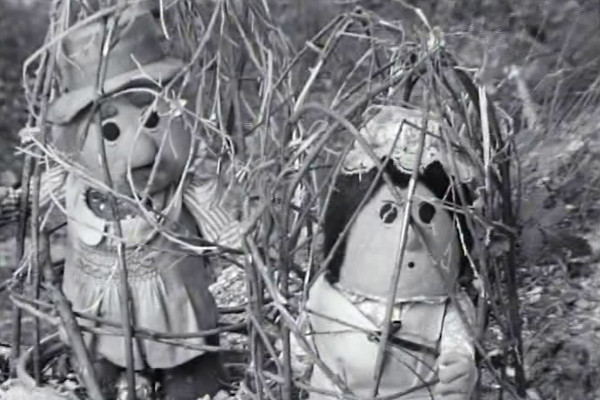
Oliver Postgate had done several different jobs in trying to find his real vocation, and by the late 50s he had been earning a living as stage manager and property supplier. Inspired by what he saw as a lack of story quality in a lot of children's programmes, he came up with his own idea, Alexander The Mouse. Looking for an animator, a friend introduced Postgate to Peter Firmin, an art school lecturer who was wary about working in television.
They finished Alexander using magnetic animation, then went on to create series using stop motion filming of cardboard cut outs, including the very popular Ivor The Engine. Their first use of puppets for stop motion had been in 1961's Pingwings, a much faster and less laborious method of working. This same method of animation also led to two series covered on this site - Bagpuss and Tottie.
One quite charming thing about The Pogles is that much of it is filmed on real locations, so that while the puppets may stand still for moments to cut down on the animation, the grass and leaves of the backgrounds can be seen gently blowing in the breeze. This element makes it particularly amusing that Mrs. Pogle claims there's no wind, after Mr. Pogle claims that the Witch's ashes may have blown away. And her ashes? They came about because Mrs. Pogle using a magic flower to wish that the witch turned into burning sticks and died. This shortly after her husband expressed the desire to get the witch and "break [her] in half on a stone."
Special credit must also be given to Vernon Elliott and his Ensemble for the fine job they do with the music for the series... while previous episodes had faded out to a jaunty tune, here it's more solemn, and filled with dread.
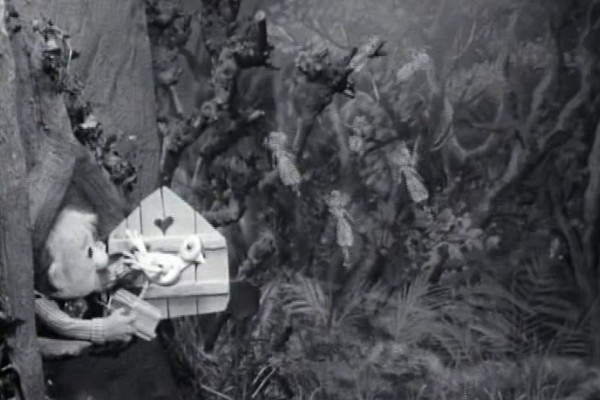
Narrowly beaten to first place, this fifth episode doesn't quite have the same sense of ominous forboding as the winner, but does feature the full realisation of the witch at her most menacing.
This is where the previously bold Pogles admit that they're frightened, with Mrs. Pogle reminding her husband that they're "alone", just in case there were any three-year-olds left watching who hadn't quite got around to wetting themselves.
The Pogles board themselves up in their house, terrified of attack from outside, almost like some stop-motion version of Straw Dogs. With the witch trying a series of shape-changing antics to try and get inside, it's a classic "home under siege" situation, made even more blatant in the final episode, where she transforms herself into a boot to kick the door in.
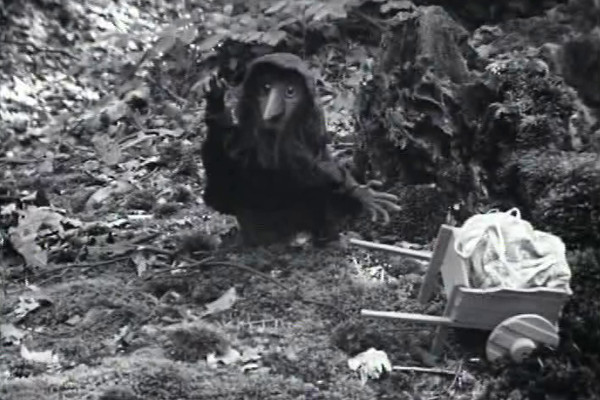
There's a debate to be had about which is the more disturbing Smallfilms production - this or Tottie. While Tottie was even bleaker than The Pogles, it at least had the virtue of being for a slightly older audience.
Although The Pogles went out later than Tottie (showcased as part of the BBC's 5:05pm Clapperboard programme), it's clearly aimed at a much younger audience, a time when children's television was just for children, and not containing teen fare like Grange Hill.
This episode features the debut of the witch, and ominous warnings from fairies, before Mr. Pogle returns home to find his shrunken wife tied in a sack, and his baby stolen. Fans of pointless trivia may care to know that the 8'18m runtime of this episode make it the shortest of series (with The Magic Bean's 9'26m the longest) But viewers were less likely to be concerned with trivia, and more concerned with what is a truly scary experience for younger viewers.